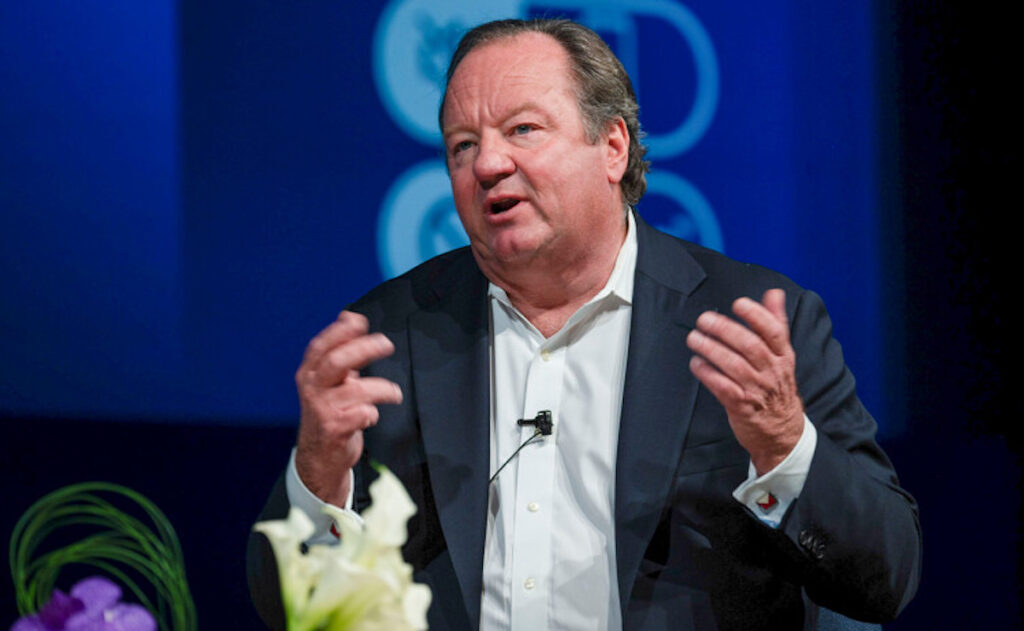
After more than 35 years of operation, TBI is closing its doors and our website will no longer be updated daily. Thank you for all of your support.
TBI Weekly: What comes next after MIPCOM 2023?
If MIPCOM reflects the industry that it serves, then we probably all emerged pretty lightly from the past week in Cannes.
The unhappy reality is that much of the pain being inflicted on content-related businesses around the world right now is probably largely unavoidable. Too much content that has cost too much has been produced for too long.
Now, with buyers of all flavours unable to make the necessary returns on their investments, a correction is in full force. The immediate question facing many of those in Cannes this week is how to ride out the current maelstom.
And the next question everyone wants answered is what’s next?
Ad woes & broadcaster budgets…
Let’s start with what’s in front of us right now: buyers are finding it tough. Streamers around the world have pulled back hard on spending, while commercial broadcasters are also having a pretty bad time of it – and again, this is a global issue.
Plucking two separate yet connected events – one from Germany and one from Canada – from the past five days underline the struggle and the response.
First, there’s ProSiebenSat.1 in Germany, where an advertising contraction driven partly by macroeconomic pressures is causing no end of pain. (And kudos should be paid at this point to CEO Bert Habets and chief content officer Henrik Pabst who fronted up to journalists’ questions here in Cannes and were refreshingly frank in their answers).
Habets said that he had seen nothing like the “unprecedented decline” of advertising over recent years in his two decades in the industry, and admitted in a question from TBI that while a recovery will come, “whether we will get [back] to the original size of the market is questionable.”
For that reason, all attention is now going to digital assets and streamer Joyn. Pabst pointed to streamer partnerships as offering one potential route out of the mire (more of this below), and later in the week, the broadcaster unveiled a new-look structure to drive cross-platform cooperation with fewer execs – veteran channel programmer Daniel Rosemann exiting.
Several thousand kilometres away in Canada, a similar contraction was taking place, with Corus Entertainment’s Troy Reeb taking on an expanded remit to oversee not just multi-platform networks, but all content operations plus studio activities.
The decision is part of a strategy to “streamline” the Corus operating model, with its exec team also being slimmed down. Two decade Corus veteran Colin Bohm is departing, with his EVP of content & strategy role being retired.
Commissioning cuts & producer pain
Senior programming and channel execs are not the only expenses being cut from broadcaster budgets.
Against a backdrop of rising production costs, commissioning spend is staying at best static and in many locations declining – sometimes rapidly.
Talking to producers across swathes of Europe but most notably the UK and the Nordics, the pain being felt is very real.
Numerous execs said they knew of companies on the verge of going under, with one or two projects left in the tank that would need to be picked up before their dwindling reserves would run out.
Broadcasters such as Channel 4 in the UK have similar problems as those faced by ProSiebenSat.1, but as Habets pointed out, there is no guarantee that spending levels will return to where they once were.
Shifts to attract advertisers to streaming should help to offset some of broadcast’s declines and that should, theoretically, be reflected in the fortunes of producers. But the digital world is an unforgiving beast. And as legacy TV players and their legacy audiences dwindle, the fight to remain relevant in the online world will be fierce for commissioners and producers alike.
Streamers (try) to get their houses in order
Few know better just how fierce the streaming game is than Warner Bros. Discovery (WBD), whose international chief Gerhard Zeiler took to the stage on Monday morning to reveal details of its European roll-out of Max.
Joined by EMEA streaming boss Leah Hooper Rosa, Zeiler confirmed that the service will launch in more than 20 countries across the region in spring 2024, with those under the current HBO Max footprint to be the first to receive the service.
A “second wave” is planned for later next year, which will include France and Belgium, although details of a specific launch date were not revealed.
Many in Europe have been waiting for word on when Max would finally launch across their territories, particularly given WBD’s ongoing campaign of cutbacks. The hope is that with a roll-out firmed up, commissioning may follow – albeit at far-reduced levels to those seen in the early parts of this decade.
Zeiler gave little else away on stage in terms of strategy, although he did provide an update on WBD’s “synergy” savings, which had initially been touted at $3bn.
These had increased earlier this year and are now “on their way to $5bn” and there seems to be further savings being eyed up as the US-based giant looks to right the ship, with Zeiler adding that “who knows where we’ll end up.”
Similar adjustments to global strategy are also appearing at the Mouse House, with the future of Disney’s Indian operations currently in question.
Reports this week suggest that Sony Pictures Entertainment is in early discussions to acquire its activities in the country, which includes streaming platform Disney+ Hotstar, if its merger with Zee Entertainment does not go ahead.
Disney has been under increasing pressure in India and may be looking for a way out, while Sony sees new opportunities in the nation and is impatient to get started. It is a stark u-turn from just a few years back, when Disney+ Hotstar subscribers helped to underwrite the launch of the Mouse House’s then seemingly impressive streamer game.
Acquisition & distribution growth
With advertising contractions and commissioning cut-backs talk of the town in Cannes, many producers were decidedly downbeat about the outlook for 2024.
But there is still money about – indeed, a report from Omdia that was exclusively seen by TBI revealed that broadcasters and streamers are set to spend $164bn on programming in 2023 (not including sports), with investment in acquired shows rising to $69.6bn following a downturn in 2022.
Spending from networks, pay-TV platforms and streamers worldwide is expected to be up only 1% from last year’s total of $161.6bn in 2022 and 3% on 2021’s figure of $159.1bn – not much given rampant production inflation. But it still underlines the opportunity of spending out there.
Acquired programming dipped from 2021’s $70bn to $67.8bn in 2022, with Omdia’s research lead for digital content & channels Tim Westcott telling TBI that a significant factor in the downturn is believed to be the US studios making less money on third-party sales.
 Co-productions, meanwhile, remain an essential strategy for many firms as they seek to grow, with Laura Fernandez Espeso, CEO of Spain’s Mediapro Studio, using her MIPCOM keynote to discuss how central they are to the company’s plans to expand operations in the US and across the English-language market.
Co-productions, meanwhile, remain an essential strategy for many firms as they seek to grow, with Laura Fernandez Espeso, CEO of Spain’s Mediapro Studio, using her MIPCOM keynote to discuss how central they are to the company’s plans to expand operations in the US and across the English-language market.
“We have a very specific plan to grow in the US and we want to increase the speed of its implementation. We are already investing more in development and growing the [US] team that we have there and we will also look to co-produce.
“We will need local partners there and we have huge experience with co-productions so the plan is clear,” Espeso told her audience.
With production costs continuing to rise and budgets squeezed tighter than ever, Espeso was far from the only executive at MIPCOM going in search of co-pro partners.
Paramount partnering up & others to follow
Another senior exec offering a refreshingly frank assessment of the situation right now was Paramount CEO Bob Bakish, who admitted during his visit to Cannes that the company is battling a challenging market.
“People like simple answers and what was in vogue three years ago with streaming was to go DTC in every country,” he said. “The reality is that it’s not that simple.”
The answer for Bakish is to double down on partnerships and “new-age content licensing”, working with partners in countries outside of major markets to succeed with streamer Paramount+ rather than going direct.
“We have a multifaceted approach to streaming with partnerships and that is a more financially powerful way and it is more responsible to the market,” he explained.
Bakish said Paramount+ would remain DTC in key markets such as the US and the UK, but added that there would be an increasing number of deals such as the one struck with Cosmote TV in Greece that allows for a Paramount+ branded area on its platform, offering shows such as Elsbeth, The Affair and upcoming Lawmen: Bass Reeves.
“For us, it is a very important development for our content licensing business and, candidly, it is the first of many such markets where we’re unlocking like that,” he added, with other US majors plotting similar moves as they re-adjust their plans for global domination.
Ways to make money
One player sitting prettier than most is Netflix. The company that started all this disruption now looks likely to again become one that could provide opportunity, at least to distributors and rights holders.
Expect to see a shift in Netflix’s strategy following the success of Suits on the streamer, with third-party licensing increasingly being sought.
The show has been its most-watched across the US for 12 weeks, it noted in its quarterly letter to shareholders this week, adding that “as the competitive environment evolves, we may have increased opportunities to licence more hit titles.”
That’s good news for distributors, who are also more likely to enjoy a more stable ride through the storm as budget-strapped buyers look for cheaper acquisitions rather than original fare.
With the Hollywood strikes also affecting show delivery over the next 12 months, Netflix co-CEO Ted Sarandos pointed to the value of more successful acquisitions and its global approach to programming.
“These are the times I’m glad we have such a rich and deep and broad programming selection. The same was true during Covid, when we were able to manage the slate through a prolonged and pretty unpredictable production interruption.”
Netflix is far from the only service wrestling with the impact of the Hollywood strikes and rising production costs, so expect to see this strategy adopted elsewhere. As is often the case, where Netflix leads, others follow suit(s).
Although more acquisitions may not be great news for producers, the drive for efficiency from streamers is pushing rights flexibility, a trend that has been emerging from US streamers in particular over the past year.
The result is an opening of the door to previously closed funding models, something ProSiebenSat.1’s content chief Pabst pointed to when discussing the possibility of sharing programming with global streamers to get shows commissioned.
And while for many this MIPCOM has come at a time of unprecedented challenges, partnerships and combining resources will become increasingly important to survival for all.
It is why the past week in Cannes remains a tentpole event for most of the industry, a place where new relationships can be forged to offset the effects of a seriously cool market.
And what’s coming next is, at least in the immediate future, abundantly clear.
Earlier this year, WBD content chief Casey Bloys told TBI he did not know when the current turmoil would end, with content spending and revenue creation dislocated from one another.
That assessment seems as accurate now as it did then. Indeed, Bakish summed up market sentiment best earlier this week.
“We are in the trough,” he said. “So be it. We play through it.”








